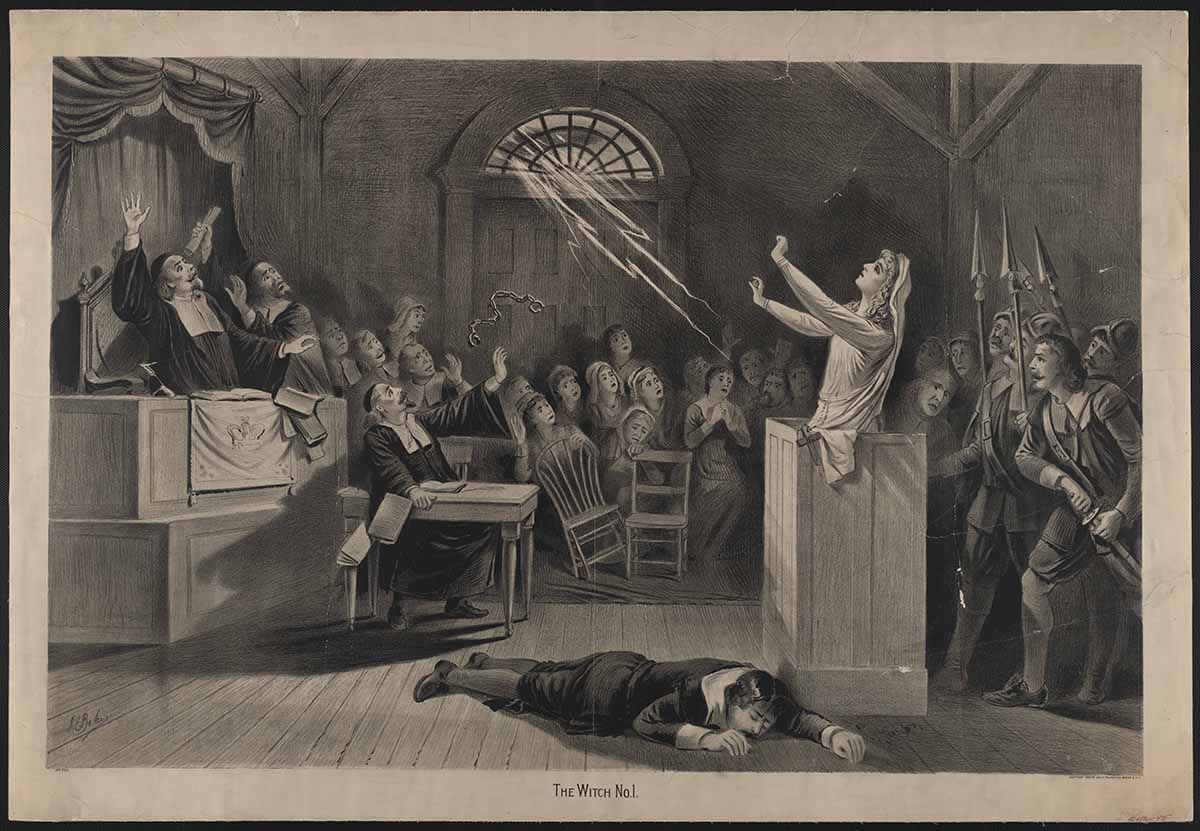The Real Salem Witch Hanging Site Was Located
Welcome to Weirdest Thing of the Week, where…well, we point out weird things.

Salem witch trials photo via Wikimedia Commons
After many years of uncertainty, the true location of the Salem witch hangings was determined this week.
Referred to as Proctor’s Ledge, the hanging site was pinpointed as the spot between Proctor and Pope Streets. The Boston Globe reports that the wooded area overlooks a Walgreens situated on Boston Street.
Visitors often mistakenly believe that the site of the hangings was near Gallows Hill, where Salem purchased land for a “witch memorial” in 1936, but never followed through with making it official. Proctor’s Ledge is a far cry from the grassy green patch.

The Salem Witch Trials Memorial is often mistaken for the site of the hangings. / Photo via Wikimedia Commons
Researchers confirmed that Proctor’s Ledge is where 19 people accused of witchcraft were put to death in 1692. These researchers, part of a group known as the Gallows Hill Project, used eyewitness accounts, court records, ground-penetrating radar, and aerial photography to confirm the spot. The Gallows Hill Project notes that since executions were meant to be public (and fear mongering), it would have been easier for citizens to reach Proctor’s Ledge rather than a place such as the top of Gallows Hill.
Eyewitness accounts like the one from Rebecca Eames of Boxford were used in the Gallows Hill Project research. Eames describes a day when she was brought to Salem for questioning. The Globe cites that Eames was escorted along Boston Road, and was kept in a house while her guards could watch nearby executions. Eames later describes being at “the house below the hill” while seeing a group of people at the execution, enabling researchers to establish her vantage point.
One scholar of the Gallows Hill Project, Emerson Baker, writes on the Oxford University Press blog, that Salem mayor Kim Driscoll plans to clean up the heavily wooded Proctor’s Ledge and install a “tasteful plaque or marker.”
“I believe that marking and maintaining this site is a long overdue step in Salem’s acknowledgement of the role the community played in the loss of innocent lives in 1692,” writes Baker. “The healing process continues 324 years after the trials.”
Have you noticed funky happenings lately? Tell me about them: mbilis@bostonmagazine.com, @madelinebilis.


